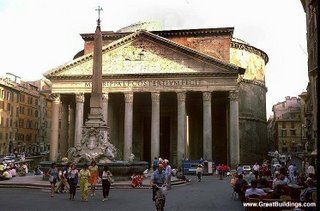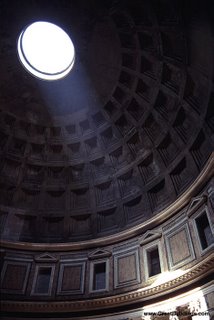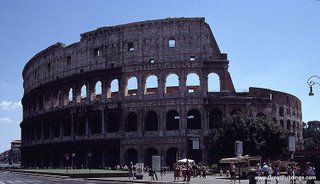
Kyuu
Sim Wei Qiang (Daryll)
24thFeb1985
Graduated from Nanyang Academy of Fine Arts 2009/ Dip/Interior Design
Designation Interior Designer
Piscean
WishList
★Laptop
★Backpack around the World esp Spain
★Golden Retriever
★An Oven
★A Dessert Cookbook
★Crumpler Bag
★Adopt A Child
★Be really Happy
My Stories..
Puppy Gifts
FellowPups
alvin
ben
chubbs
chupachup
daphne
gary
hongjoo
howard
huihuang
jac
jasmine
jayugi
joycelyn
kangxiang
maj
mindy
miz
nicky
nora
oldielord
scarlet
shihan
simon
timo
tiwi
vicsky
weeju
weiguang
weixiang
wirda
Passer-bys..
Tran-Quill-ity..
杨丞林-带我走
Take this quiz!
 Quizilla |
Join
| Make A Quiz | More Quizzes | Grab Code
Quizilla |
Join
| Make A Quiz | More Quizzes | Grab Code
| adopt your own virtual pet! |
Credits
li0nheart
Labels: music
__________________________________________________________
Firstly, Government only give 4 main bonuses which is CPF top-ups, growth dividend, workfare bonus and NS bonus. Then people came out with a new bonus. I shall slowly talk on each of the new bonuses.
How much you can get? $600
55 years old-$300
60 years old-$400
Then there are some that i have think of which can also be a bonus for singaporeans.
That is all for the new bonuses that are out and will be out sooner or later if people keeps on listening to other poeple's nonsense and comparing each others bonus. If this continues, I would sincerely like government to just give a fixed amount to every single person in singapore including PRs to avoid more commotion over this package.
Labels: music
__________________________________________________________After work today, chit chin and i went toBugis to meet up with chun hoo, jian hao and junren to get a gift for haohan's incoming birthday which is this friday. I shall not say what the gift was but if you want to know you can ask me privately.Hee..hee..After that we meet up with wen hao at Bugis Junction and we proceed to 天天火锅 to have our steamboat dinner. Aiyah! I brought along my camera but forgot to take photos.lol. Next time must remember.This weekend will be a sleepless weekend because all the chalet lands on this weekend. This Friday got two(one is hh's birthday and the other one is wanxin's chalet) and Sunday got another one(a hotel at Changi Village with Mag and other colleagues). I guess i will enjoy this Havoc weekend...=D
Fallingwater(Ohiopyle,Pennsylvania)
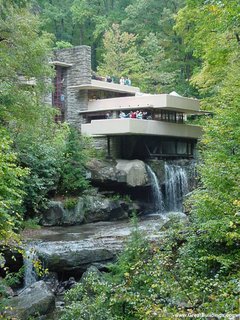 It detects a grudging recognition of the International Style in the interlocking geometry of the planes and the flat, textureless surface of the main shelves. But the house is thoroughly fused with its site and, inside, the rough stone walls and the flagged floors are of an elemental ruggedness.
It detects a grudging recognition of the International Style in the interlocking geometry of the planes and the flat, textureless surface of the main shelves. But the house is thoroughly fused with its site and, inside, the rough stone walls and the flagged floors are of an elemental ruggedness.No.9
The Alhambra (Granada,Spain)
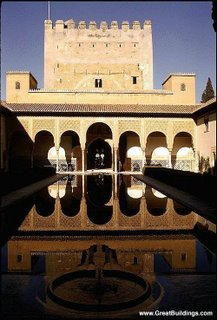 On a hill overlooking Granada, the Alhambra—a sprawling palace-citadel that comprised royal residential quarters, court complexes flanked by official chambers, a bath, and a mosque.The romantic imagination of centuries of visitors has been captivated by the special combination of the slender columnar arcades, fountains, and light-reflecting water basins found in those courtyards—the Lion Court in particular.
On a hill overlooking Granada, the Alhambra—a sprawling palace-citadel that comprised royal residential quarters, court complexes flanked by official chambers, a bath, and a mosque.The romantic imagination of centuries of visitors has been captivated by the special combination of the slender columnar arcades, fountains, and light-reflecting water basins found in those courtyards—the Lion Court in particular.No.8
Chrysler Building (Newyork,U.S.A)
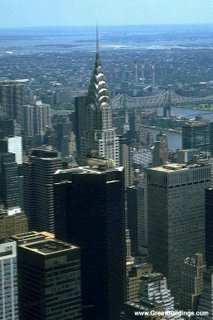

Casa Batllo (Barcelona,Spain)
 Mighty pillars that appear to resemble the feet of some giant elephant are the first thing to meet the eye of the passerby from street level. The roof reminds him of a completely different animal: it is bordered by a jagged line similar to the backbone of a gigantic dinosaur. A facade extends between the two, including a number of small, elegantly curved balconies that seem to stick to the front of the house like birds' nests on the face of the cliff.
Mighty pillars that appear to resemble the feet of some giant elephant are the first thing to meet the eye of the passerby from street level. The roof reminds him of a completely different animal: it is bordered by a jagged line similar to the backbone of a gigantic dinosaur. A facade extends between the two, including a number of small, elegantly curved balconies that seem to stick to the front of the house like birds' nests on the face of the cliff.No.6
Petronas Towers (Kuala Lumpur,Malaysia)


No.5
Sagrada Familia (
Through great bronze doors, one enters one great circular room. The interior volume is a cylinder above which rises the hemispherical dome. Opposite the door is a recessed semicircular apse, and on each side are three additional recesses, alternately rectangular and semicircular, separated from the space under the dome by paired monolithic columns. The only natural light enters through an unglazed oculus at the center of the dome and through the bronze doors to the portico. As the sun moves, striking patterns of light illuminate the walls and floors of porphyry, granite and yellow marbles.
Taj Mahal (Agra,India)
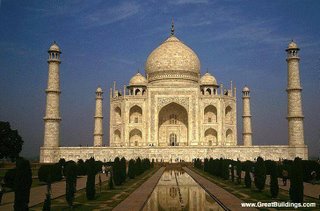 A white marble tomb built in 1631-48 in
A white marble tomb built in 1631-48 in
No.2
 The twin towers, with 110 floors rising 1,353 feet, ... (are) the tallest in the world. From observation decks at the top of the towers it...(is) possible to see 45 miles in every direction....One distinct advantage of the project's enormity is the architectural opportunity to advance the art of building.The 208-foot wide facade is, in effect, a prefabricated steel lattice, with columns on 39-inch centers acting as wind bracing to resist all overturning forces; the central core takes only the gravity loads of the building. A very light, economical structure results by keeping the wind bracing in the most efficient place, the outside surface of the building, thus not transferring the forces through the floor membrane to the core, as in most curtain-wall structures. Office spaces will have no interior columns. In the upper floors there is as much as 40,000 square feet of office space per floor. The floor construction is of prefabricated trussed steel, only 33 inches in depth, that spans the full 60 feet to the core, and also acts as a diaphragm to stiffen the outside wall against lateral buckling forces from wind-load pressures.Unfortuantely,both the towers were destroyed due to September 11 terrorist attack.
The twin towers, with 110 floors rising 1,353 feet, ... (are) the tallest in the world. From observation decks at the top of the towers it...(is) possible to see 45 miles in every direction....One distinct advantage of the project's enormity is the architectural opportunity to advance the art of building.The 208-foot wide facade is, in effect, a prefabricated steel lattice, with columns on 39-inch centers acting as wind bracing to resist all overturning forces; the central core takes only the gravity loads of the building. A very light, economical structure results by keeping the wind bracing in the most efficient place, the outside surface of the building, thus not transferring the forces through the floor membrane to the core, as in most curtain-wall structures. Office spaces will have no interior columns. In the upper floors there is as much as 40,000 square feet of office space per floor. The floor construction is of prefabricated trussed steel, only 33 inches in depth, that spans the full 60 feet to the core, and also acts as a diaphragm to stiffen the outside wall against lateral buckling forces from wind-load pressures.Unfortuantely,both the towers were destroyed due to September 11 terrorist attack.Roman Colosseum (
The Colosseum or Flavian Amphitheater was begun by Vespasian, inaugurated by Titus in 80 A.D. and completed by Domitian. Located on marshy land between the Esquiline and Caelian Hills, it was the first permanent amphitheater to be built in

It makes me feel like death is all destined and predesignated. It also shows me how fragile life can be in this world.Remember!It's always with you!Premonition can be a gift or a curse. If i were to have premonition i guess i will freak out to see how i am going to die.
...看着你
1.) If you have a baby and your friend also have baby.Both of you can sign up for the workfare bonus as babysitter. Both of you will just have to pay each other the same amount of salary..eg. Both pay each other $400 per month and you will successfully cheat government money of $600 each.
2.)Get monthly salary vouchers from your company indicating the amount of monthly salary lesser than the amount of CPF contribution and you appeal for more.
3.)Say that you did odd jobs and work for at least six months even if you did not work for six months.
4.)Say that you continue to do odd jobs after you quit a job that you work for less than 6 months and appeal for more.
I found a clip at youtube today. It's about a saber fightwhich shows a father's undying love and supposrt for his chidren and wife. The clip might be quite simple butit's quite meaningful and well-directed short film for me at least.
Love is something that cannot be forced. In order for it to flourish you need to know your limit and allow some free space between both parties. If not both parties might suffer due to suffocation of love. To fight for love is the ultimate level I think. It means that nothing is much more important to you other than your love ones.
致死不渝的爱情最珍贵
Today, my colleagues and I were talking about "relationship”. I didn't mean to shoot them. It’s just that I feel that two people who talks a lot are quite hard to get along because they both are "Quarrel King and Queen”. Both side will hardly give in to each other.Then, there came another issue on spending too much time and energy. I know to love requires lots of energy and attention but it does not mean that you have to give 100% energy to it. If you continue like that, how are you going to survive this relationship on long run? It’s good to give each other some rest time to make this relationship healthier.
健康爱情=健康人生

After the work,wanxin,cc and me went to tanjong pagar's main HQ to attend training sessions.Wei Yee is unable to attend becasue today is her mother's birthday.Hui Juan also went to attend the training at 6pm.Hmm..Guess where she was the whole afternoon.No..she was not at home.The training lasted for an hour and we left to had our dinner at a cafe at orchard plaza where wanxin's friend works there.Gabriel ,sean and Mag came to join us for dinner as well.It's like we are 4 lamppost!!So coincidence cause the place we were eating at is called Gooseberry Cafe.The food there is not bad and the atmosphere is really good.Too bad hui juan cannot make it but we were still able to talk about them.=P
I am very tired now..Got to sleep already or else tomorrow sure die!!
After finishing work at Jurong, the whole CPF staff including sean,gabriel and ming jie went to Choa Chu Kang Sports Complex to play badminton.It's been a while since i played badminton.I think the last time i played was during febuary or march before ben left for australia.I think i am too rusty already.I only played for like an hour plus and my arms and legs are already aching.But the exercise was quite shiok, waiting for another smacking good time. I am actually awaiting for the Big Walk in May. I think it will be as exciting cause working out is FUN.But for now i think i just want to have a great sleep after a good exercise.=)

@#*$&%@*%@%%^&;;%*%$!;%*@#^&%^$&^$&$#^&$&^&$%(#@&!%$*&!@%$*^@
Halfway towards the office he saw a lit office and barged right into the room.Huijuan my collegue was inside doing some admin stuffs.She was stunned when that customer started to complain to her about the previous incident.She knew nothing about it.Then' he started to scold Huijuan STUPID and IDIOT.The voice was so loud that Mag who was in another room overheard and came to Huijuan's rescue.Mag try to find out what was going on and the customer just keep yacking non-stop on how bad the service and how it waste his precious time.Inside the yacking,he also added in STUPID and IDIOT on Mag.Then finally our big boss came and talk to him.At this moment the customer just couldn't stop complaining and as Simon was trying to explain to him.He scolded Simon IDIOT and STUPID as well.zzzz..As Simon heard this comment, he rebuted by scolding him back IDIOT.Then as Simon was trying to talk to him again he said,"I don't want to talk to you again.Please go away!"This really pissed Simon off and he said,"if you don't like it you can leave now."That guy just went back to sit down and wait for his number.When it was his turn to proceed to the counter, he continue to complain about the previous issue to the officer at the counter.What a bugger!
When he was at the counter i went to a room to escape from his sight before being scolded again.He was at the counter for like 20 mins..19 mins on complaining and 1 min on getting statements.After that he left and i finally can go out and continue my work.I've heard that if the person just want the ticket and wait for the number just give them and let them wait.It don't pays to be nice to tell them that the queue at the reception is a faster way.I also heard from my OIC Mag that i have to look at customer face to identify who got those KIAM PAH face and for these people just issue them the Q-ticket.I've also learnt the importance of being an IDIOT would means that you have to act SMART.What a day to get such unreasonable and uncivilized customer.I came to know that not only customer can lodge a complain.We people serving tham can also complain them if they scold vulgar or do anything uncivilized.Hmm..So customer is not always right.There is a limit to it.Today was Gabriel last day..Wish him all the best in his future.Heard from Mag that this thursday every temp have to go to main HQ at tanjong pagar for training.Another new task since today is the last day for PP(workfare bonus).Hope it is for the best!


I hope that i am able to get the sueldo by 25th or i cannot compra anything at all.It's either i starve myself from tomorrow onwards or i stop going out of my house beside working.Okay,so i have to swear from now that tomorrow to 25th no outdoor activities for me that requires dinero(excluding travelling and food).Now i know why people say that something that you didn't see you will not realize it.
It's so sad that this world is revolving around dinero.But it is this that cause people to learn how to save and pase dinero wisely.Next time i need to think twice before using my dinero.I don't want to be like the past where i always got dinero form my parents.Since the end of my JC life i have set a great record of not getting permiso from my parents so i don't intend to break it now since i am already 21.I understand it's hard for my mother to gane el dinero and ayuda the whole family.So i cannot possibly still ask for dinero from her unless there comes a day where i am realmente me rompió.
 I love u,u love me,we are singing family...To be able to sing is a fortune,something that is worth cherishing.Music plays a great part in my life.Without it,i feel frustrated and stress easily.One don't need an angelic voice to sing,it is the process of letting out your kept voice that make u relax and excited.
I love u,u love me,we are singing family...To be able to sing is a fortune,something that is worth cherishing.Music plays a great part in my life.Without it,i feel frustrated and stress easily.One don't need an angelic voice to sing,it is the process of letting out your kept voice that make u relax and excited.Actually i had not used to singing until this year.I've never been to Kbox,Party World during my past 20 years.It's because of one chance of singing in party world that i start to enjoy the feeling of singing my heart and lungs out.Although i hate listening to my voice due to the inability to control my voice,i still continue to sing in my own way and style.我的招牌歌是 黄义达的那女孩对我说.The song is so nice!I will always pick this song during all my singing sessions.Hope to go for another singing session soon..Heehee..
Beside singing songs, i also enjoy listening to music.God gave us a pair of ears to listen to all the wonderful and worst things in life.I choose to listen to the wonderful things.That is why i always bring along my iriver along whenever i go out.It's my only entertainment and relaxation outside.Whenever i am bored,i will just on my player and listen to my collection of songs.I enjoy listening to the double J's productions and F.I.R's composition.It's filled with deep meaning and nice melody.朗朗上口..To me listening to music is a whole relaxation therapy,that brings me to another world of happiness and comfort.
__________________________________________________________
Rain is suppose to be good for many people at home sleeping cause it is cooling and cosy to sleep.However for those who are planning to go out and enjoy the good weather it is a disaster.Oh well, guess i will have to reschedule my swimming to this sunday.Not sure whether i got the mood to go on that day.It's been a while since i went for windsurfing also,maybe can find one day get shiqing and the rest for a surf.
Beside the environment,i like the exciting activities that can be only done overseas..like bugee-jumping,water-rafting,skydiving,real rock-climbing,scuba-dving...and many more.These are the events that bring ones life to a higher level!Moreover there are many interesting people that i can meet at other countries and other weird food and animals that i can explore..It will be an amazing race for me if i were to be able to fufil that.
Labels: movies
__________________________________________________________Today i just got another good news!My OIC Mag says that i might be promoted to perm temp next week cause gabriel is leaving soon.Finally i can work from 8-5 pm and earn my OT pay.Hee..hee..OMG! two days of glutton already..really need to work out.This friday sure gonna exercise.

It's another shack day today at the CPF SC. I was standing at the e-lobby from the start till the end.There was one customer that spoils my day peaceful day lor.I was trying to tell him that he is unable to get the information he wants from the e-lobby but he insisted that the information can be gotten from the website.I told him to go to the counter and talk to an officer but he still insist on wanting the information from the website.I nearly want to throw something at him,so bek cek lor.Luckily his HDB consultant explain to him than he finally left the place peacefully.I am damn dulan with him lor but still have to talk to him nicely.No wonder people say customer is always RIGHT! You can never win them.
Anyone wants to go swimming this friday?Can exercise and have some fun together..=)
This week is a short working week due to good friday.Hope to find some entertainment to do rather that rotting at home.Heehee..
What do i do on my 1st rest day beside thursday which i didn't really rest much?I spent the whole day watching movies that i have downloaded over the days which i have not started work yet and playing games.It's quite boring though staying at home.Think i need to find some activities to do next thursday..No more rotting at home.I have also touch up my blog by adding some horoscopes etc..Time pass quite slowly when we are resting.I just don't know the reason.Oh well hope for a better week next week.
I found plenty of challengers over this week of talking with all the applicants for the title of ARGUE KING/QUEEN.All the challengers where so strong..that let me feel that 我输得心服口服!i really go down on my knees to them.Most of them nearly drive me crazy.everytime i tried explaining the facts to them they will divert me to another way which is more of advantage to them..My mouth went dry talking to them.Even when i tried to emphasize on the fact they will say that they just want more money.What is wrong with all the rich people in Singapore huh?If you are already living in big private estate and earning big money why still bother to cheat government pethetic amount of few hundred dollars.It's not that you are not being paid,it's just that you are given a smaller share compared to those less fortunate,poor citenzens.No wonder there is a saying that rich people are stingy people.These people are the 败类 of singapore.SCUM!!They deprive the chances for those not as wealthy people by trying to gain more of what is not theirs.
It's being a pleasure working at CPF board because can meet a lot of different poeple..some are really nice and thankful while others take you for granted and abuse their rights of being able to complain.Most of all the collegues are a bunch of fun and loving people.It's just funny seeing all ranges of people regardless of race language or religion making a fool out of themselves.Around 7 more weeks to go before i head for my study at NAFA..Guess the experience will be a fruitful one. =)
Today i feel the after effect of the sunburnt yesterday.I felt uneasy during work due to this itchiness and stickiness of the skin.I just hope that it will get better but i would still want to go swimming again because it is quite refreshing and relaxing after you went for a swim.I wish that i am able to have some self-discipline and keep on maintaining a balance in sports and work now so as to maintain a better lifestyle.Tomorrow is my last half-day in JE CPF board already.If possible,i hope that i can change with another collegue of mine who lives near woodlands.=) We shall see the outcome tomorrow...
This morning i was thinking of waking up late as normally i would wake up at 730am to prepare for work.Then i realized that i am suppose to go swimming today with Guanrui.There goes my sleep.=P It's been a long time since i went out with Guanrui so i quickly washed up and went to the JE swimming complex.We swam for like 2hours and went for late lunch.Woot..It's been a while or a year since i went swimming.It feels great to be able to swim relaxly in the pool.We also went spent some time tanning..Now i realize i shouldn't be tanning CAUSE i DID NOT put SUNTAN LOTION..now i am like roast chicken.LOL
After the swimming session i went back home immediately to change up for work(the ice-cream one).Have to repay one more day of labour.Luckily i went down early cause it started to pour heavily at Jurong Point area.As usual whenever it rains Jason will always be late and today he is 1 hour late.Heck it! My last day of work anyway.Today's sale is my best for the previous 3 days.I managed to sell a total of $106.At the end of the day,two guys went up to him and say they are quitting right into his face.lol.Think he too angry with them that he forgotten about me liao.Nvm at least he still pays me.Haha!Will miss those friends at the ice-cream job.Some are actually very nice and friendly.Good Luck for them!Take care!
Now, i can finally put all my focus on this current CPF job now.I am so lucky yo get to know all the good colleagues.Although it is quite bad at BOSS side.Never mind i will just take everything as an experience and to know one more knid of person that is living in this world...
Oki e i guess i need to sleep already or else i cannot get enough energy for tomorrow test.It just an hectic day today..Hope my other off day won't be like that..=D
In relation, I feel that i am actually quite selfish myself to not think of the conseqences of two-timing.Truthfully speaking ,i don't feel that great myself too.That is why i propose to the 1st BOSS that i don't wish to get any amount of pay and i just help him whenever time permits for me. Actually he had already done a great favour for me in allowing substitution.He may not be a Good supervisor cause he seems schezophenic.At times he just flare and at times he just like an angel.Nodbody is perfect. As long as you are able to learn from your mistake it is an great accomplishment-To conquer your own weakness.As for me i am still not able to cope with such situition.I get depressed easily nowadays and feel lack of confidence in myself.That is the hurdle that i have to overcome.


The story begins with last week..I was searching for jobs to do and i got this ice-cream thing(the GAME).The rule of this game is to finish 5 days of work before you can quit.If by any chance you break the rule,you will be given a penalty of $200.At that time i was just so desperate to get a job that i join the GAME.Then on last saturday, I managed to get a job from dezhi's intro. That is when the BIG BANG begins...I manged to get into the second game which is much better than the 1st one that i can play for long term but i am currently still playing the 1st game. The second game i managed to push until monday so that i can continue playing the 1st game for another day.At the same time i can tell the BOSS(Jason) of the 1st game that another player(HH) is taking over me for the last 3 days of the game before i left the GAME. Then there seems to be a miscommunication between the BOSS(Jason) and me.He presumed that the substitution(HH) is only taking over me for one day!! #@%#^@ Today he called and confronted me again and say that i need to play an extra day of game for him or else he will just kick me out of the game and i will have to pay the penalty of $200.What a ******* he is ,Saying that he is nice enough to let someone substitute me already so i have to play one more day of GAME with him on thursday.Luckily thursday is an Off day for me for my second GAME so i just really hope that i can just END my torment with this 1st GAME and concentrate on my second game. This is the worst BOSS that i've got even WORST than O$P$.The currrent BOSS that i've got is such a saint.She is worth working with than my !st BOSS.
If this thursday the 1st BOSS gonna come out with any new stuns.I will definitely pawn him ..and LEAVE the GAME!!! and the story shall continue in the next episode of REVENGE of the VENGENCE.
Oh well..a new start from me today.No more army life and no more blog that is not updated.A time for me to up my standard and be more hardworking.=P.Today is the start of my new job at CPF board.Before that i have done 'japalan' temp job like promoting pringles and icecream.The icecream temp job gave me the most problem one as i am required to do 5 days before i can quit or else there will be a penalty of $200!!Luckily i got hao han to take over me for 3 days of temp.If i didn't managed to get this job i guess i will be the one selling icecream now.Thanks alot of the help man (specially to haohan)i owe u ONE.
 Okie..back to my 1st day of work at the CPF board.I went together with chit chin(CC) on the 1st day. Our OIC is quite a funny and nice woman.Everyone called her Magdalene aka Macdonald.She told me that i am a temp temp staff cause i might have to go to CCs or CDCs if they requires people there while CC is the permanent temp staff.Tomorrow i will not be reporting to work with CC cuase my working hour is 9-5 while his is 8-5.lol. Quite funny right..Got different working hours one. As for the job scope..basically is to help people fill up Progress Package forms and answer enquiries if possible.My record for today..think is 200 forms in a day!Woot..Morning till noon was the worst..Dunno why people like to wake up so early just to sign up for the PP which can be done from 1-15th of april for hardcopies and 25th for ATM and internet.Note: the money won't run away!!! RELAX lah! Heard from some old bird that going to CCs or CDCs is only to smack mosquitoes one.LOL.Never mind as long as i can earn my OT..i don't mind anything. Hope tomorrow the crowd will lessen...=D can relax a bit.
Okie..back to my 1st day of work at the CPF board.I went together with chit chin(CC) on the 1st day. Our OIC is quite a funny and nice woman.Everyone called her Magdalene aka Macdonald.She told me that i am a temp temp staff cause i might have to go to CCs or CDCs if they requires people there while CC is the permanent temp staff.Tomorrow i will not be reporting to work with CC cuase my working hour is 9-5 while his is 8-5.lol. Quite funny right..Got different working hours one. As for the job scope..basically is to help people fill up Progress Package forms and answer enquiries if possible.My record for today..think is 200 forms in a day!Woot..Morning till noon was the worst..Dunno why people like to wake up so early just to sign up for the PP which can be done from 1-15th of april for hardcopies and 25th for ATM and internet.Note: the money won't run away!!! RELAX lah! Heard from some old bird that going to CCs or CDCs is only to smack mosquitoes one.LOL.Never mind as long as i can earn my OT..i don't mind anything. Hope tomorrow the crowd will lessen...=D can relax a bit.__________________________________________________________







